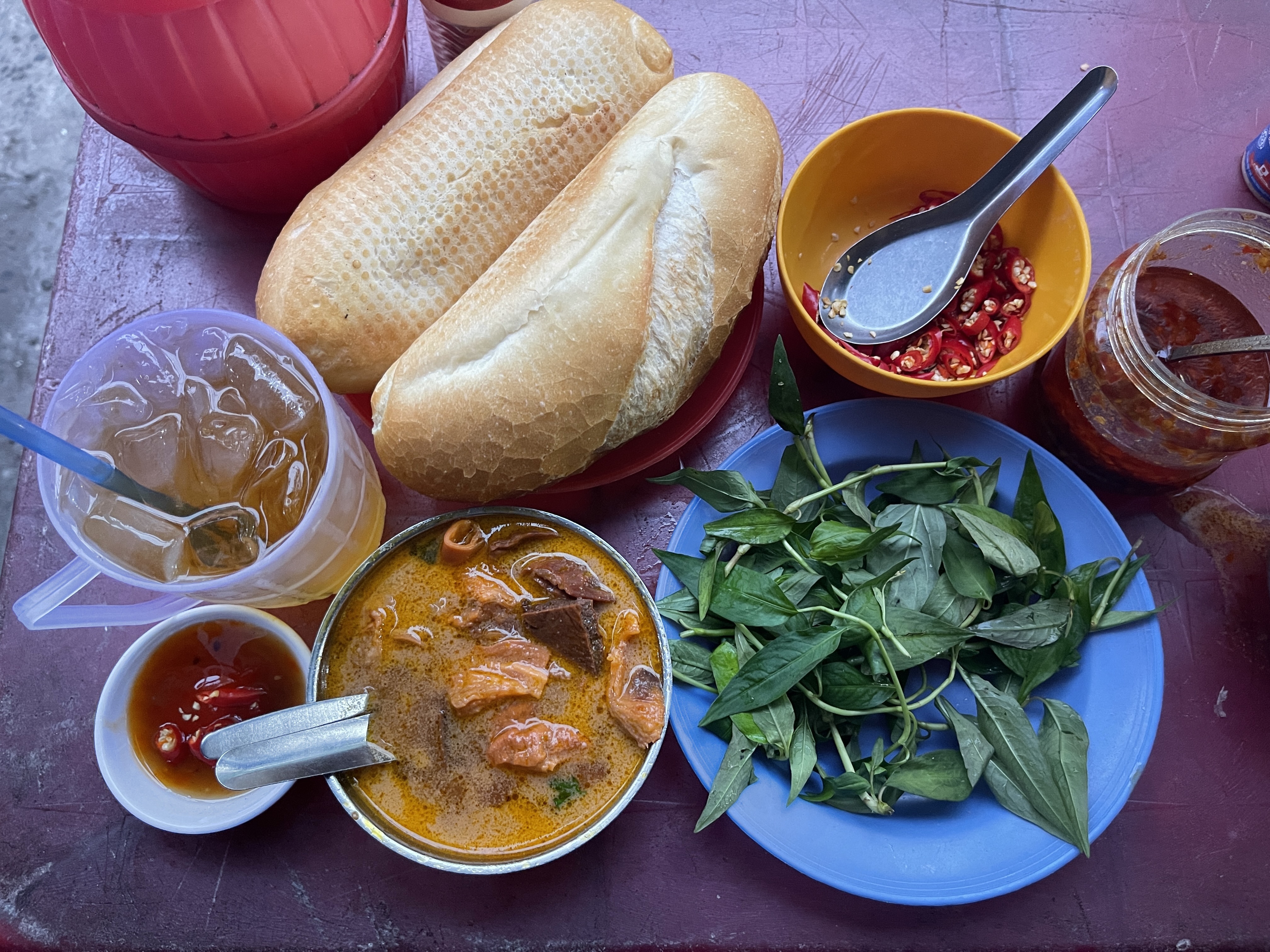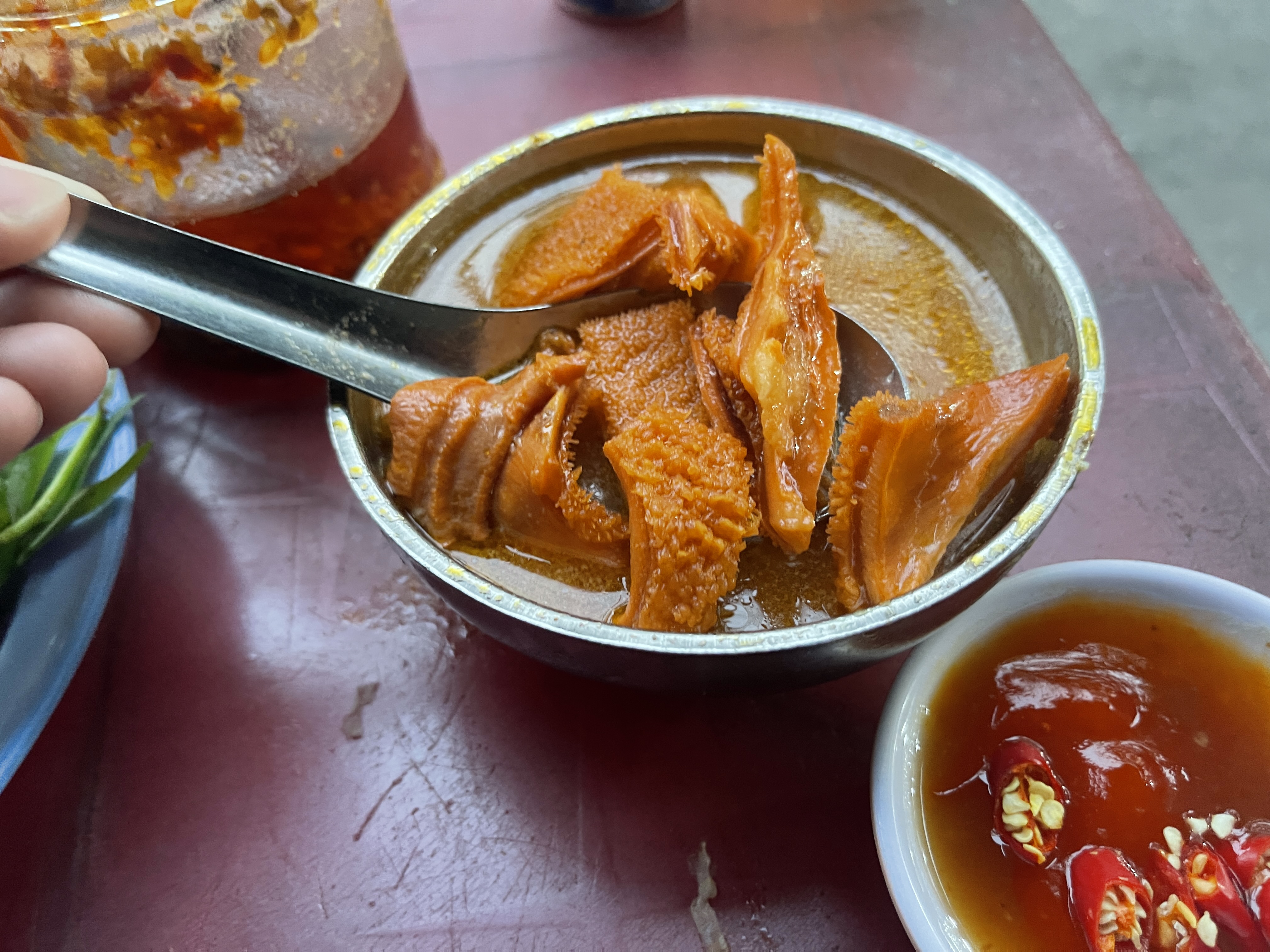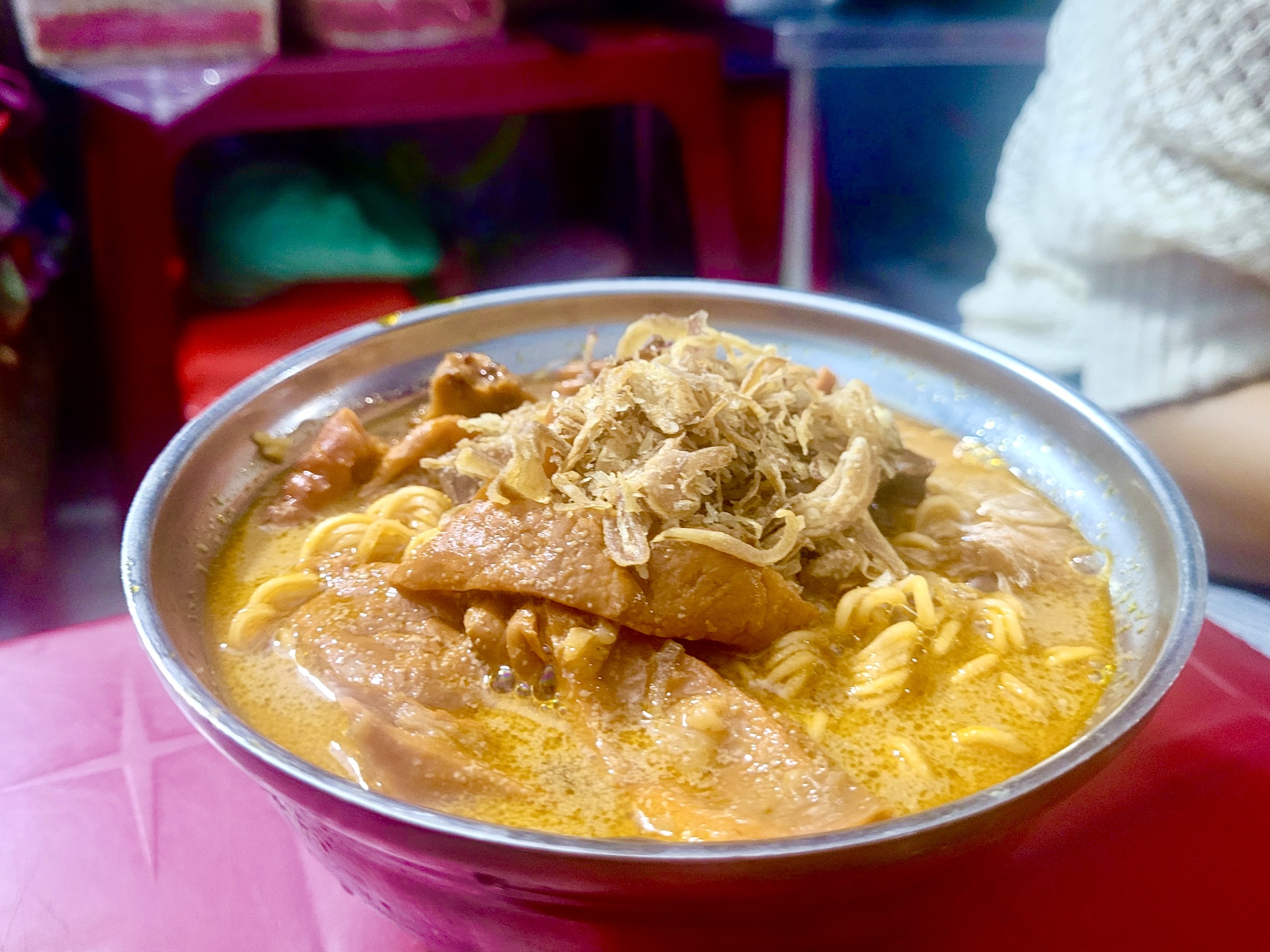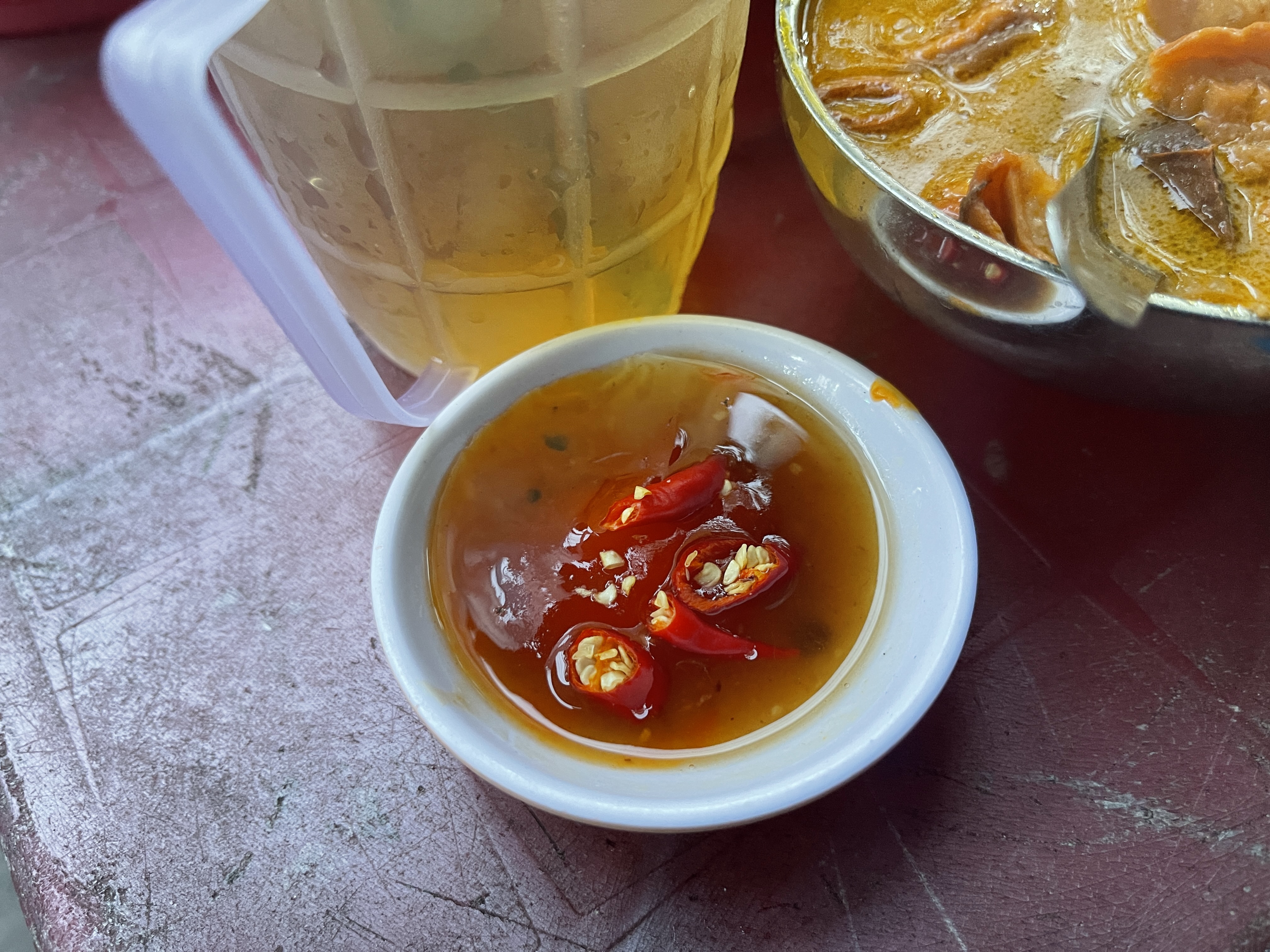Stomach, intestine, liver, and tripe… Have I got your taste buds going yet? Maybe not, but when you try phá lấu in Vietnam you may just change your mind.
Phá lấu is a light meal that uses all the 'other bits' of pigs and cows and is actually rather delicious.
Phá lấu dates back hundreds of years. For unknown reasons, the dish became particularly popular in the southern region of Vietnam and is particularly known as a specialty street food in Ho Chi Minh City.
The most popular is phá lấu bò, which cooks cow offal in a recognizably orange creamy broth.
|
|
| Beef offal is cooked into 'phá lấu' at a shop in District 11, Ho Chi Minh City. Photo: Dong Nguyen / Tuoi Tre News |
If you speak to any student that studied in a university in Ho Chi Minh City, they will tell you about every good and not so good phá lấu seller in the region. Phá lấu is a common food of university students because it is both filling and cheap. Essentially, it is using all the leftover parts of the animal that nobody else wants and turning it into a meal.
But what is phá lấu? Think of every unused part of an animal. This might include things like stomach, liver, kidney, skin, uterus, and a range of other bits. Cut them all into bite-sized pieces then boil them in a big steaming pot for between one and two hours. Then, add to the broth some coconut milk and spices for flavor. After about two hours of preparation you have phá lấu.
There are two main ways that this dish is served. Cheap packet noodles are boiled and served as a base with the phá lấu, including the broth, filling the bowl. The other option is to fill a smaller bowl with the cooked food and broth and serve it with a fresh bread roll. All of these come with tamarind sauce that you can make spicy by adding chili.
|
|
| 'Phá lấu' is served with noodles at a shop in Binh Thanh District, Ho Chi Minh City. Photo: Ray Kuschert / Tuoi Tre News |
The best aspect of this dish is that it is as good at breakfast as it is late at night as a snack. Most sellers will begin early in the morning and go all day until they sell out. Others maintain a production line and stay open late into the night, sometimes all night in the highly populated entertainment areas of Ho Chi Minh City.
The taste, against your expectations, is surprisingly good. The spices and coconut milk make a soup that is similar in some ways to a very thin and watery gravy that you might find at a bistro in a Western country. It is a little sweet, a little salty, and using the chili and tamarind sauce, which rolls out the mixture of the four key flavors that Vietnamese cooking is renowned for around the world.
|
|
| Tamarind dipping sauce is indispensable while having 'phá lấu'. Photo: Dong Nguyen / Tuoi Tre News |
In Ho Chi Minh City, Districts 4 and 5 are famous for serving phá lấu, especially around universities in the area. You can also find it in popular street food regions and even in some local markets. This is not a dish that is seen in restaurants or popular tourist areas, so to find it you need to explore just a little outside the regular tourist spots. But your time will be rewarded if you take the road less traveled and explore the taste of something that is truly Vietnamese.
I was fortunate to find a shophouse in a 'hem' at 195 Xo Viet Nghe Tinh in Binh Thanh District that sold the dish in the morning and at night. There, three generations of a family have been serving this dish for many years. Whilst the elderly mother and her adult daughter work all day preparing and serving a steady stream of customers, their three-year-old daughter sits in a cot watching on, and I am sure as soon as she is old enough she, too, will join mum and grandma and develop her skills in making this amazing dish.
|
|
| A woman serves 'phá lấu' at a shop in Binh Thanh District, Ho Chi Minh City. Photo: Ray Kuschert / Tuoi Tre News |
After we all cringe at the thought of the ingredients of phá lấu, to me, it seems to be the most logical and healthy food available. For years, medical experts have suggested we need to return to the idea of eating the entire animal as part of a balanced diet. In recent generations, the thought of eating anything but boneless steaks has been frowned upon by consumers across the Western world. This dish brings to us the old, and logical, theory of not wasting any part of the animal. And, to me, it is a wise theory that we should continue to live by today.
Whilst many other dishes, like phở and cơm tấm, are world famous, in my mind, you have not visited Vietnam until you try the lesser-known dishes that the real locals eat.
Phá lấu is the food of the poor, when money and food were in short supply and people created a quality meal from anything they could find. The dish delivers its own story through its taste that has stood the test of time.
When I enjoy this dish, I know I am honoring the generations before me that created a quality dish from nothing and it has carried struggling university students, farmers, and workers through their daily challenges for hundreds of years. Make sure you take the road less traveled and experience phá lấu next time you are in Ho Chi Minh City.
Like us on Facebook or follow us on Twitter to get the latest news about Vietnam!



























